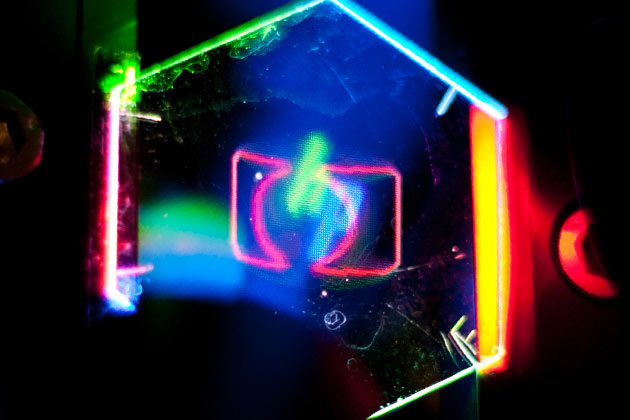Holographic Displays Coming to Smartphones?

Stereoscopic 3-D images can give many individuals an unnecessary headache. To look at images such as these, it takes extreme mental effort. When you focus on objects in your everyday life, your brain focuses on the same point that your eyes converge. With images such as stereoscopic 3-D images, each of your eyes is presented with a different image, and you have to focus on the screen where the image is supposed to be.
Holograms are able to avoid the headache prompting images by producing light right in the spot where your eyes focus: The light goes through the specific point and hits your eyes in the same manner that it would if the object was a physical object. Holograms also have the advantage of being able to work from many different angles and do not require a pair of glasses to see them. Until recent times, holograms required huge projectors and screens or a particular angle for viewing, but Ostendo Technologies and Hewlett-Packard’s spin-off company Leia, have big plans of placing these types of images right in your palm of your hand and fitting in your pocket within a couple years.
Many pixels need to be placed in a small space to be able to create this type of image, and the geometry of creating the images is a difficult task. Having microlenses manufactured to place in front of the light-field display pixels is also problematic because the positions and shapes have to be in the right angle to have the beams at the correct angle.
Ostendo’s 3-D images use 1 million little pixels on a chip that consist of Red, Green, and Blue layers of micro-LEDs that sit on top of an image processor that is made of silicon. The pixels are typically in the range of 5 to 10 micrometers on a side. By using the individual pixel layers, each pixel is able to send any color of light out that is focused in a thin beam. Many vertical waveguides deliver the light out from the layers and send it in the right direction. An image processor under each pixel allows for power to be saved and the overall computational load to be lightened.
Leia is creating a 3-D image by placing a grid of gratings just behind an everyday LCD screen. The gratings direct the light below them in different directions which creates up to 64 viewing angles for a 3-D video or image. The ultimate goal is to create a system that would be easy to integrate with already existing screens or displays that are transparent.
The first commercial product is scheduled to be produced in 2015.
